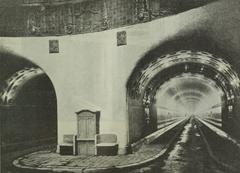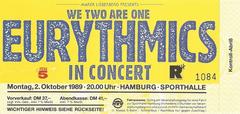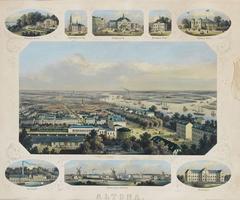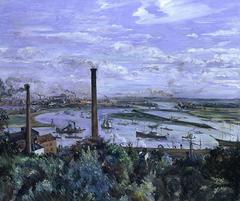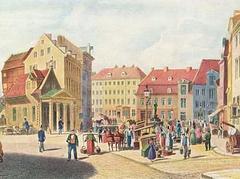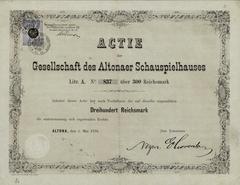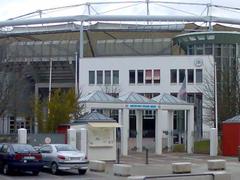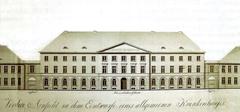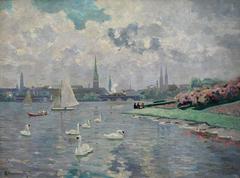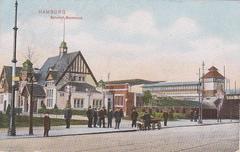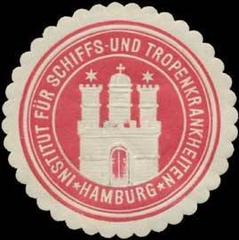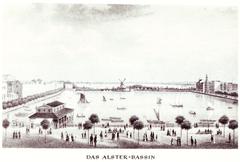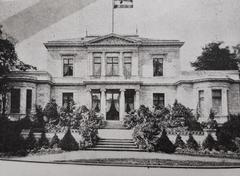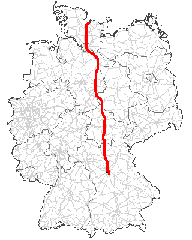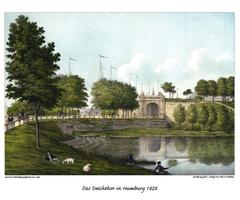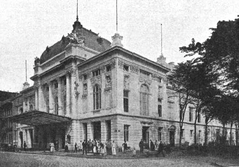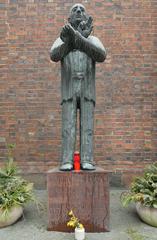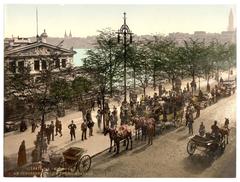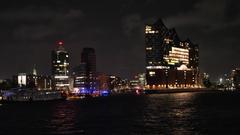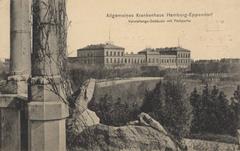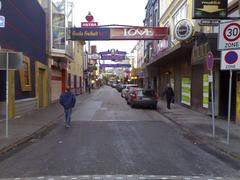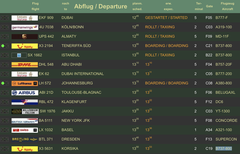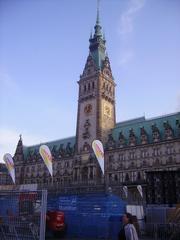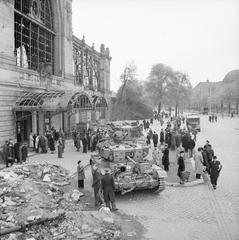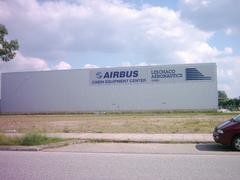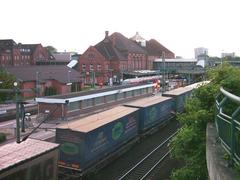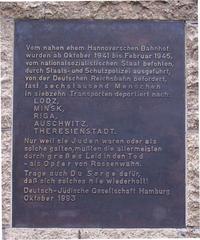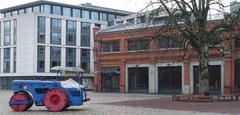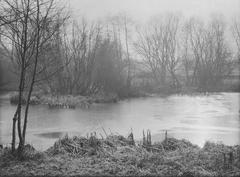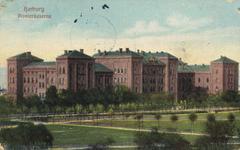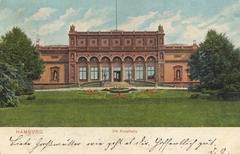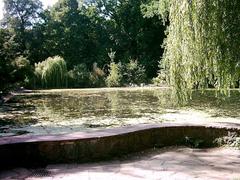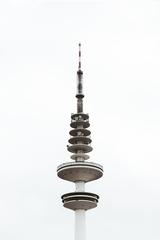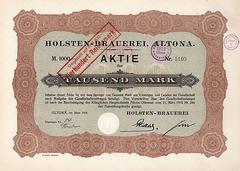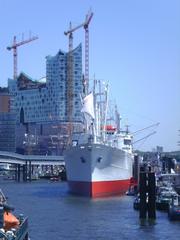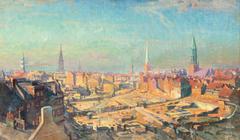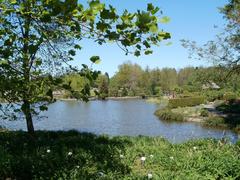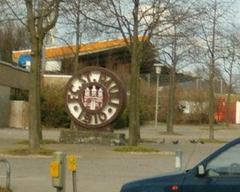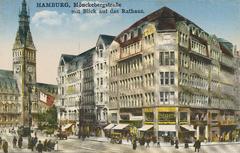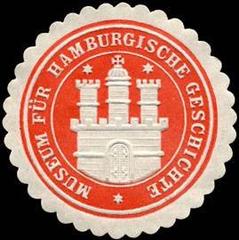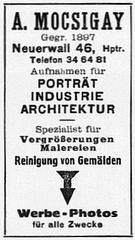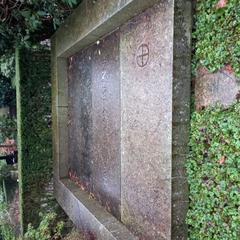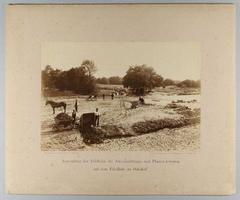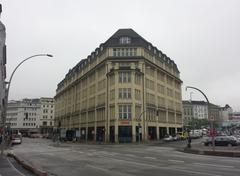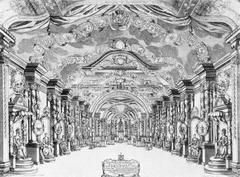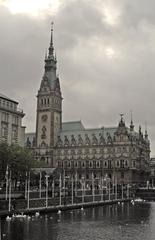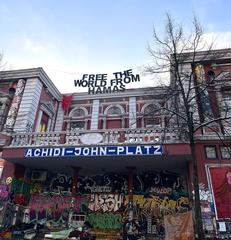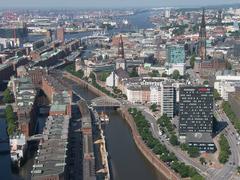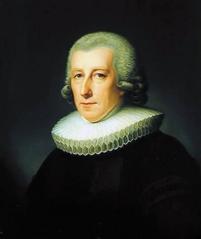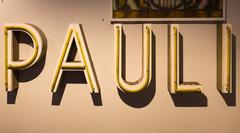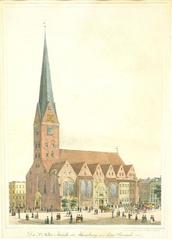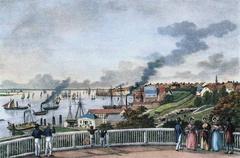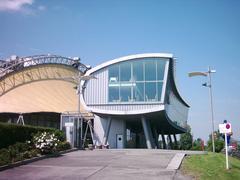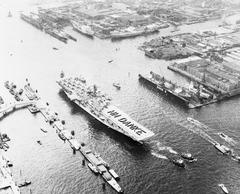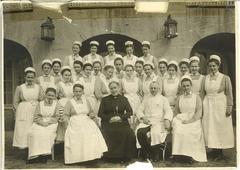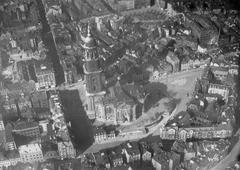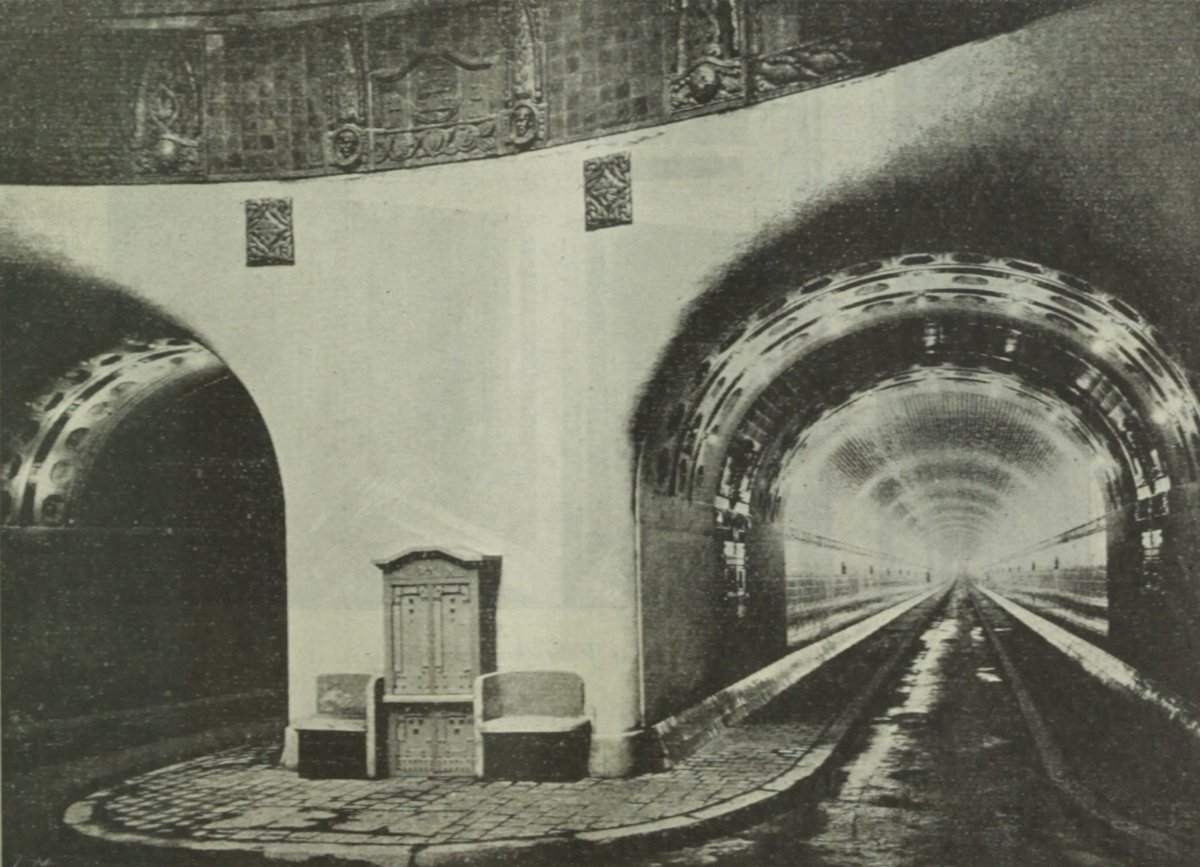
St. Pauli-Elbtunnel: Visiting Hours, Tickets, and Historical Significance
Date: 17/07/2024
Discover the St. Pauli-Elbtunnel in Hamburg: A Historical Marvel
The St. Pauli-Elbtunnel, also known as the Old Elbe Tunnel, is an engineering marvel from the early 20th century, situated in Hamburg, Germany. Opened in 1911, this tunnel was constructed to address the logistical challenges posed by the Elbe River, which divides the city. Initially conceived to facilitate the movement of workers and goods between the northern and southern parts of Hamburg, the tunnel quickly became an integral part of the city’s infrastructure. Designed by Ludwig Wendemuth and constructed by Philipp Holzmann, the tunnel was the first in Europe to employ the caisson method, making it a significant achievement in civil engineering (Hamburg Tourism).
The St. Pauli-Elbtunnel not only served practical purposes but also stood as a symbol of Hamburg’s industrial growth and resilience. During World War II, it played a vital role in the city’s defense and logistics, and despite heavy bombing, it remained largely intact. Over the years, the tunnel has undergone several renovations to accommodate modern vehicles and ensure safety, while preserving its historical and architectural significance. Today, it is a protected monument and a popular tourist attraction, offering visitors a glimpse into Hamburg’s rich maritime heritage and engineering prowess (Hamburg Travel).
Table of Contents
Exploring the St. Pauli-Elbtunnel - History, Visiting Hours, and Tips for Your Hamburg Visit
Introduction
The St. Pauli-Elbtunnel, also known as the Old Elbe Tunnel, is a marvel of early 20th-century engineering and a significant historical site in Hamburg. This article delves into the rich history of the tunnel, provides practical visitor information, and highlights its cultural significance and legacy.
History of the St. Pauli-Elbtunnel
Early 20th Century - The Need for a Tunnel
In the early 20th century, Hamburg was a bustling port city experiencing rapid industrial growth. The Elbe River, which bisects the city, posed a significant logistical challenge for workers commuting between the northern and southern parts of Hamburg. The existing ferry services were insufficient to handle the increasing traffic, leading to the conceptualization of a tunnel under the Elbe River. The idea was to create a more efficient and reliable means of transportation for the workforce and goods.
Construction and Engineering Marvel
The construction of the St. Pauli-Elbtunnel began in 1907 and was completed in 1911. The tunnel was an engineering marvel of its time, designed by Ludwig Wendemuth and built by Philipp Holzmann. It was the first river tunnel in Europe to be constructed using the caisson method, a technique involving large watertight chambers that were sunk into the riverbed and then connected to form the tunnel.
The tunnel consists of two parallel tubes, each 426.5 meters long, with a diameter of 6 meters. It was designed to accommodate both pedestrian and vehicular traffic, with elevators at both ends to transport vehicles and people to the tunnel level. The construction involved around 4,400 workers, and the project cost approximately 10.7 million gold marks, a substantial sum at the time.
Opening and Early Use
The St. Pauli-Elbtunnel was officially opened on September 7, 1911. It was a significant milestone for Hamburg, providing a direct and efficient route under the Elbe River. The tunnel quickly became an essential part of the city’s infrastructure, facilitating the movement of workers, goods, and vehicles between the northern and southern parts of Hamburg.
Initially, the tunnel was used primarily by pedestrians and horse-drawn carriages. However, as automobile usage increased, the tunnel adapted to accommodate motor vehicles. The elevators, designed to transport vehicles to the tunnel level, were a unique feature that set the St. Pauli-Elbtunnel apart from other tunnels of its time.
World War II and Post-War Period
During World War II, the St. Pauli-Elbtunnel played a crucial role in Hamburg’s defense and logistics. The tunnel was used to transport troops, equipment, and supplies, and it also served as a shelter during air raids. Despite the heavy bombing of Hamburg, the tunnel remained largely intact, a testament to its robust construction.
After the war, the tunnel continued to be an essential part of Hamburg’s transportation network. However, the increasing volume of traffic and the advent of larger vehicles posed challenges for the aging infrastructure. In the 1950s and 1960s, the tunnel underwent several renovations and upgrades to accommodate modern vehicles and ensure safety.
Preservation and Modern Use
In the late 20th century, the St. Pauli-Elbtunnel faced competition from newer and larger tunnels, such as the New Elbe Tunnel, which opened in 1975. Despite this, the Old Elbe Tunnel remained a vital part of Hamburg’s heritage and continued to be used by pedestrians, cyclists, and light vehicles.
Recognizing its historical and architectural significance, the St. Pauli-Elbtunnel was designated a protected monument in 2003. Efforts were made to preserve its original features, including the distinctive ceramic tiles and Art Nouveau design elements. The tunnel underwent extensive renovations between 2009 and 2019 to restore its structural integrity and ensure its continued use.
Cultural Significance and Legacy
The St. Pauli-Elbtunnel is more than just a transportation route; it is a symbol of Hamburg’s industrial heritage and engineering prowess. The tunnel’s unique design and historical significance have made it a popular tourist attraction, drawing visitors from around the world. Guided tours and exhibitions provide insights into the tunnel’s construction, history, and role in Hamburg’s development.
The tunnel has also been featured in various cultural works, including films, literature, and art. Its distinctive architecture and historical ambiance make it a popular location for photography and artistic projects. The St. Pauli-Elbtunnel stands as a testament to Hamburg’s resilience and innovation, bridging the past and present in a city that continues to thrive.
Visitor Information
Ticket Prices
Visiting the St. Pauli-Elbtunnel is free of charge for pedestrians and cyclists. There is a small fee for vehicles, which varies depending on the type and size of the vehicle. For the most up-to-date information on ticket prices, visit the official Hamburg tourism website.
Opening Hours
The St. Pauli-Elbtunnel is open 24 hours a day, seven days a week. However, the vehicle elevators operate on a more limited schedule, typically from early morning until late evening. It is advisable to check the current operating hours before planning your visit.
Travel Tips
- Best Time to Visit: To avoid crowds, consider visiting early in the morning or late in the evening.
- Accessibility: The tunnel is accessible to pedestrians, cyclists, and vehicles. Elevators are available for transporting vehicles and people to the tunnel level.
- Photography: The tunnel’s unique architecture makes it a popular spot for photography. Be sure to bring your camera to capture its distinctive features.
Nearby Attractions
- Landungsbrücken: Located near the northern entrance of the tunnel, this area offers stunning views of the harbor and numerous dining options.
- Elbphilharmonie: A short distance away, this iconic concert hall is a must-visit for architecture and music enthusiasts.
- Miniatur Wunderland: The world’s largest model railway, located in the Speicherstadt district, is a fascinating attraction for visitors of all ages.
Special Features
Special Events
Throughout the year, the St. Pauli-Elbtunnel hosts various events, including guided tours, art exhibitions, and cultural festivals. These events provide unique opportunities to explore the tunnel’s history and architecture in greater depth.
Guided Tours
Guided tours are available for those interested in learning more about the tunnel’s construction, history, and significance. Tours typically last around an hour and are conducted in multiple languages. Check the official website for tour schedules and booking information.
Photographic Spots
The St. Pauli-Elbtunnel offers numerous spots for photography enthusiasts. Highlights include the beautifully tiled walls, the impressive elevators, and the panoramic views of the Elbe River from the tunnel entrances.
FAQ
Q: Is there a fee to visit the St. Pauli-Elbtunnel?
A: Visiting the tunnel is free for pedestrians and cyclists. There is a small fee for vehicles.
Q: What are the opening hours of the St. Pauli-Elbtunnel?
A: The tunnel is open 24/7, but vehicle elevators operate on a limited schedule.
Q: Are guided tours available?
A: Yes, guided tours are available and provide in-depth insights into the tunnel’s history and construction.
Q: What nearby attractions can I visit?
A: Nearby attractions include Landungsbrücken, Elbphilharmonie, and Miniatur Wunderland.
Conclusion
The St. Pauli-Elbtunnel is a remarkable historical site that continues to captivate visitors with its unique architecture and rich history. Whether you’re a history buff, architecture enthusiast, or casual traveler, the tunnel offers something for everyone. For more detailed information, visit the official Hamburg tourism website.
References
- Exploring the St. Pauli-Elbtunnel - History, Visiting Hours, and Tips for Your Hamburg Visit, 2024, Author (Hamburg Tourism)
- Exploring the St. Pauli-Elbtunnel - History, Visiting Hours, and Tickets, 2024, Author (Hamburg Tourism)
- Ultimate Guide to Visiting St. Pauli-Elbtunnel in Hamburg - Hours, Tickets, and Tips, 2024, Author (Hamburg Travel)
